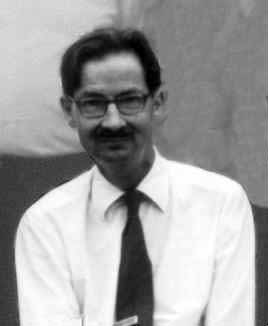


 تاريخ الرياضيات
تاريخ الرياضيات
 الرياضيات في الحضارات المختلفة
الرياضيات في الحضارات المختلفة 
 الرياضيات المتقطعة
الرياضيات المتقطعة
 الجبر
الجبر
 الهندسة
الهندسة 
 المعادلات التفاضلية و التكاملية
المعادلات التفاضلية و التكاملية 
 التحليل
التحليل
 علماء الرياضيات
علماء الرياضيات |
Read More
Date: 21-2-2018
Date: 25-2-2018
Date: 24-2-2018
|
Born: 21 July 1926 in Weybridge, Surrey, England
Died: 28 September 1992 in the SS Waverley, at sea between Rothesay and Largs, Scotland

John Leech was educated at Trent College in Derbyshire. He entered King's College Cambridge, graduating as a wrangler with a B.A. in 1950. After graduating Leech was appointed to a post with Ferranti in Manchester where he worked on the construction of an early digital computer.
In 1954 Leech left Ferranti to return to Cambridge, becoming a research student in the mathematical laboratory. He was appointed as a lecturer in the Computing Laboratory of Glasgow University in 1959. He spent the academic year 1967/68 as a research fellow at the Atlas Computer Laboratory near Harwell in England.
In 1968 a new university was created in Stirling, 40 km from Glasgow. Leech was appointed as Reader and first Head of Computing Science at Stirling. Two years later he was promoted to a Personal Chair, the first awarded by the University of Stirling. He took early retirement in 1980, having worked part-time for a few years before this due to ill-health.
Douglas Munn, writing in [2], describes Leech's mathematical work as follows:-
By inclination he was a pure mathematician, with a taste for number theory, geometry and combinatorial group theory, his interests tending towards the particular rather than the general. ... he developed one of the first programs to implement the Todd-Coxeter coset enumeration algorithm - a pioneering achievement in the application of computers to algebra.
Leech is, however, best known for the Leech lattice which gives rise to three sporadic simple groups. In 1964 he published a paper on sphere packing in eight or more dimensions. It contained a lattice packing in 24 dimensions. In 1965 he submitted a supplement to the paper giving a packing in 24 dimensions with a lattice now known as the Leech lattice. A few months later he found a packing of twice the density and his paper was rewritten appearing in 1967.
Leech knew that the symmetry group would be interesting, and he worked on it for some time giving a lower bound for its order (which later proved to be the actual order of the group). Knowing that he did not have the group theory skills necessary to prove his conjectures he tried to interest others, see [1]:-
I dangled the problem under various noses, including those of Coxeter, Todd, and Graham Higman, but Conway was the first to swallow the bait...
A detailed description of this discovery is given in [1].
A few weeks before his death, Leech visited us in St Andrews on each day for about a week and four of us worked on a number of problems which had been left unsolved by Leech 30 years before. To his great delight we succeeded in solving some (but not all) of the problems. It came as a great shock to me [EFR] to hear of his death. In [3] this is described as follows:-
One of the most avid supporters of the preservation of the paddle steamer Waverley, John Leech ... collapsed and died on board the ship during the final cruise of the season. ... He was standing between the funnels on the return leg ... between Rothsay and Largs when he suffered a heart attack. As the steamer made its way back up river to Glasgow, the red Ensign was lowered to half mast as a tribute...
Leech died almost exactly one month after Gorenstein who had overseen the classification of finite simple groups. The three sporadic groups which Conway deduced from Leech's lattice play an important role in the classification.
Books:
Articles:



|
|
|
|
التوتر والسرطان.. علماء يحذرون من "صلة خطيرة"
|
|
|
|
|
|
|
مرآة السيارة: مدى دقة عكسها للصورة الصحيحة
|
|
|
|
|
|
|
نحو شراكة وطنية متكاملة.. الأمين العام للعتبة الحسينية يبحث مع وكيل وزارة الخارجية آفاق التعاون المؤسسي
|
|
|